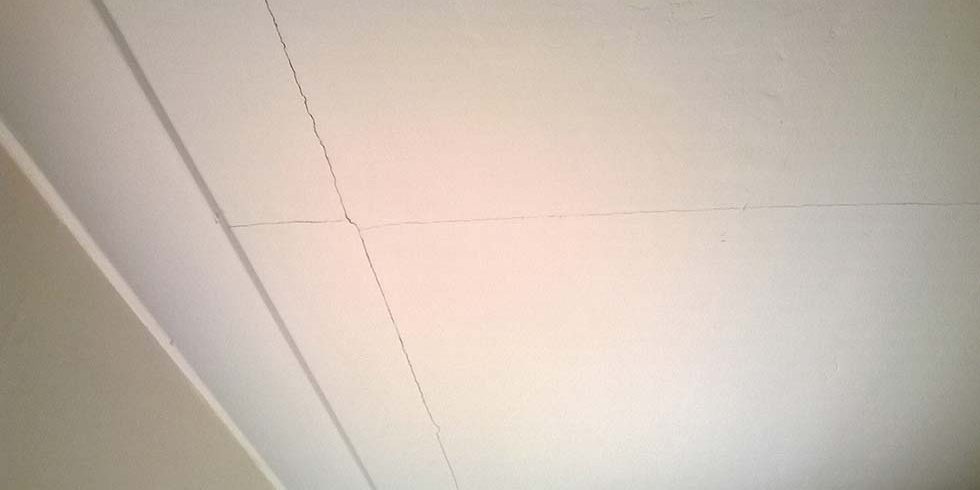Most plaster ceilings have cracks and sagging over time. It could be likely your ceiling is old; therefore, gravity and vibrations are loosening the plaster.
Why You Should Repair a Ceiling Crack Right Away
Make ceiling crack repairs as soon as you spot them. The first thing is to determine if it is a structural issue or leak that needs attention right away. Many of these hairline cracks are cosmetic and can get fixed with a thin coat of premixed joint compound and a coat of paint, but some are not. It would be best if you had a professional building inspector determine the cause before you make the repairs.
Before You Patch a Ceiling
Before you begin your ceiling repair, make sure to have safety glasses and a high-quality dust mask. A peaked cap, long-sleeve shirt and disposable coveralls you can throw out when you finish will also come in very handy.
When you start cutting into the plaster, dust and even insulation from the attic will rain down. Fiberglass and asbestos are dangerous ingredients in old insulation, and some older paints used lead, so take care.
Repairing Ceiling Cracks — Is it Easy?
Honestly, nothing is easy about plaster ceiling repair. However, it is something you can do as a DIY project. With the right tools and equipment, repairing ceiling cracks in plaster ceilings can return them to a brand-new look.
Typically, the cause of the crack is plaster coming loose. Therefore, you should use some drywall screws with plaster washers to lift it back into place. Put these 40mm drywall screws about six inches away from the crack along the length of the crack. Then, with a utility knife, make the crack wider by cutting along a 45-degree angle away from the crack on both sides.
Cut a length of drywall tape the length of the crack to put over it after the first layer of premixed joint compound. Trowel the joint compound over the crack, and screws to cover. Now, use the tape to cover the crack and put another layer of joint compound over the tape.
Using circular motions, trowel the compound until it is smooth. Let it dry, and then sand it with 100-grit sandpaper. Paint the area with primer and let dry for 24 hours, and then paint the entire ceiling with two coats of paint.
How to Repair a Plaster Hole
Usually, plaster holes are created by someone’s foot coming down through the plaster while walking in the attic, and they miss a batten, or from water damage. Whichever is the case, plaster hole repair is a bit more complicated. You will need to cut or score the hole at a point away from the hole where the ceiling is stable.
Cut completely around the hole, and gently pull down the plaster around the hole. Gently tap around the edges to shake down the dust and debris. Cut a new piece of plasterboard the same size as the hole. Affix new plasterboard to ceiling joists. Cover the perimeter with tape, then apply compound over the tape and smooth over. Let it dry, sand the edges. Repeat the process if necessary. Paint the entire ceiling so the repaired area does not stand out.
By now, you should know how to fix a crack in the ceiling plaster.
What is concerning is when cracks recur after repair. This could be a sign of structural damage. Additionally, water damage to plaster ceilings usually points to a leak in the roof. It would be best if you engage a professional building inspector to investigate the problem, find possible structural damage and furnish you with a detailed report.
Houspect inspection reports give you a detailed summary of your home’s condition that is easy to read and understand. Our inspectors are trained according to Australian Inspection Standards and are all very experienced Licensed Builders.







